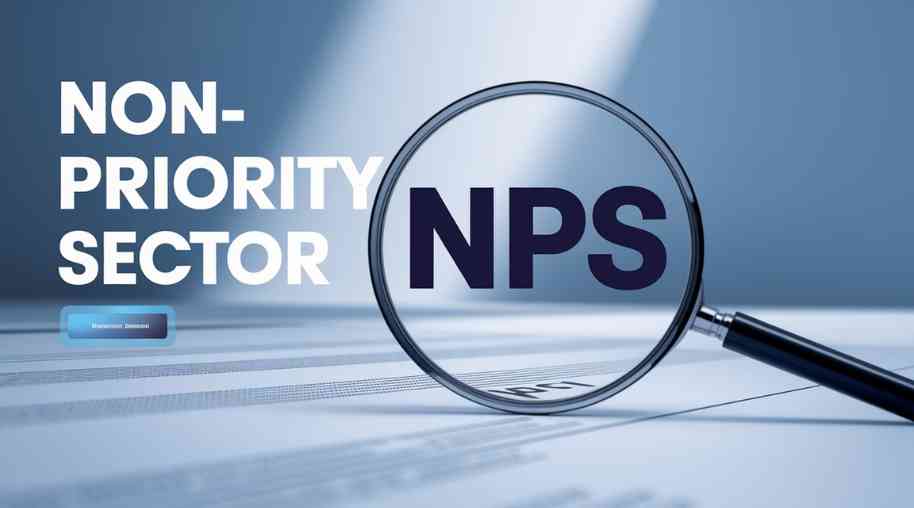NPS Full Form-Non-Priority Sector
by Shashi Gaherwar
0 1766
Non-Priority Sector Lending: Understanding Its Role and Impact in Banking
In the banking sector, loans are classified into Priority Sector Lending (PSL) and Non-Priority Sector Lending (NPSL). While PSL targets sectors vital for economic and social development, NPSL covers areas outside these mandates. Despite less regulatory focus, NPSL plays a key role in the financial ecosystem. This article explores non-priority sector lending, its components, impact on banks, and economic significance.

What is Non-Priority Sector Lending?
Non-Priority Sector Lending (NPSL) refers to loans provided to sectors not covered by the Reserve Bank of India’s (RBI) priority sector guidelines. Unlike PSL, which mandates credit allocation to sectors like agriculture and MSMEs, NPSL includes:
- Large-Scale Industries: Corporate loans for expansion and operations.
- Real Estate: Funding for luxury housing and commercial projects.
- Consumer Loans: Personal and vehicle loans for high-value purchases.
- Investment Activities: Loans for trading and capital markets.
- Luxury Goods: Financing high-value consumption.
Banks allocate credit to these sectors based on commercial viability, risk, and profitability.
Key Features of Non-Priority Sector Lending
- Market-Driven Allocation: Credit decisions are based on bank discretion and demand.
- Higher Interest Rates: NPSL loans carry higher rates due to risk and no regulatory caps.
- Profit Maximization: Focus on high-return sectors boosts bank profitability.
- Lower Default Risk: Loans to corporations and HNIs often have lower default rates.
- No Minimum Requirements: No mandated credit allocation for NPSL.
Sectors Covered Under Non-Priority Sector Lending
Key sectors include:
- Corporate Loans: Funding for business expansion, working capital, and acquisitions.
- Real Estate: High-value projects beyond PSL limits, like luxury housing.
- Consumer Loans: Financing for luxury vehicles and personal needs.
- Infrastructure Projects: Large-scale projects in power and highways.
- Investment Activities: Loans for trading and capital market ventures.
Impact of Non-Priority Sector Lending on Banks and Economy
NPSL significantly affects banks and the economy:
- Profitability: Higher interest rates make NPSL a key revenue source.
- Credit Growth: Supports business and industrial expansion.
- Risk Management: Higher default risks in volatile sectors like real estate.
- Economic Diversification: Promotes growth in non-agricultural sectors.
- Competitive Banking: Drives innovation in financial products.
Challenges in Non-Priority Sector Lending
NPSL faces several challenges:
- Bad Loans: Corporate and real estate loans contribute to NPAs.
- Economic Uncertainty: Downturns affect repayment rates.
- Regulatory Changes: Policy shifts impact profitability.
- Limited Access: Small borrowers face strict credit criteria.
Balancing Priority and Non-Priority Sector Lending
Banks balance PSL and NPSL for stability using:
- Diversified Portfolios: Spread credit across PSL and NPSL to reduce risks.
- Risk-Based Pricing: Higher rates for riskier NPSL loans.
- Credit Evaluation: Use tools to minimize NPA risks.
- Regulatory Compliance: Align NPSL with RBI policies.
Non-Priority Sector Lending (NPSL) drives bank profitability, corporate financing, and infrastructure growth. While lacking PSL mandates, it offers flexibility to meet market demands. Careful risk management and diversification are crucial for sustainable growth. Balancing PSL and NPSL fosters economic development and financial stability.
Further Learning Resources
If you’re passionate about building a successful blogging website, check out this helpful guide at Coding Tag – How to Start a Successful Blog. It offers practical steps and expert tips to kickstart your blogging journey!
For dedicated UPSC exam preparation, we highly recommend visiting www.iasmania.com. It offers well-structured resources, current affairs, and subject-wise notes tailored specifically for aspirants. Start your journey today!

Share:








Comments
Waiting for your comments